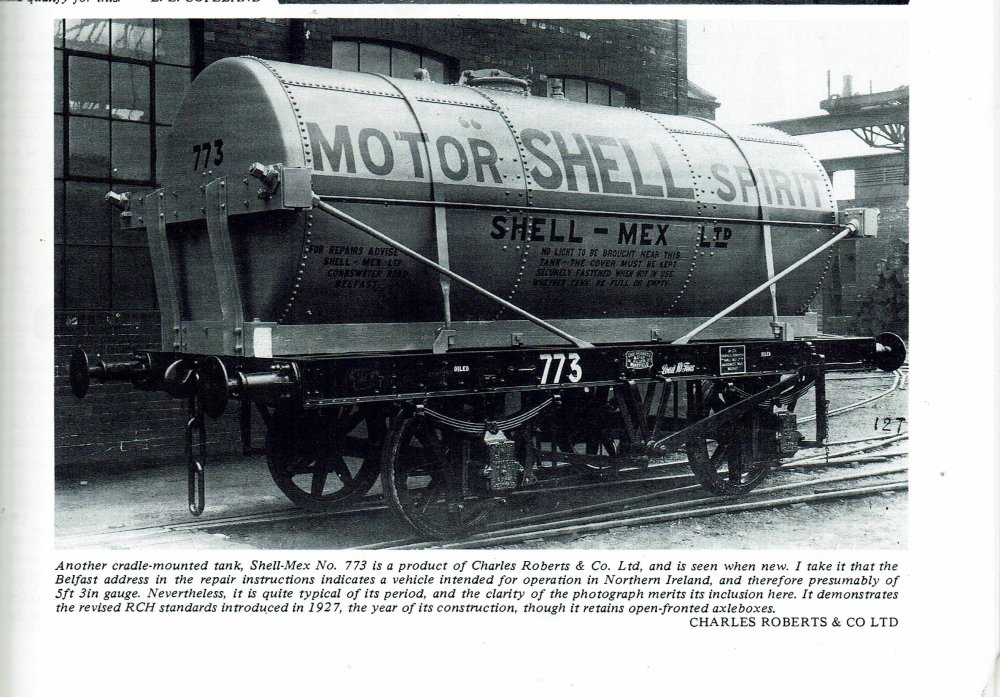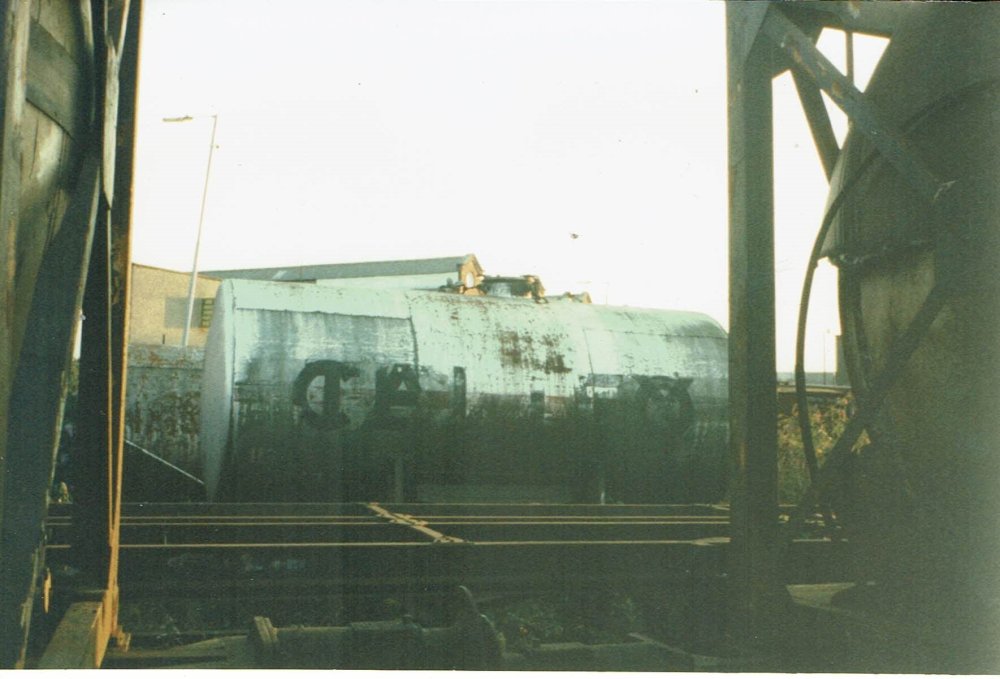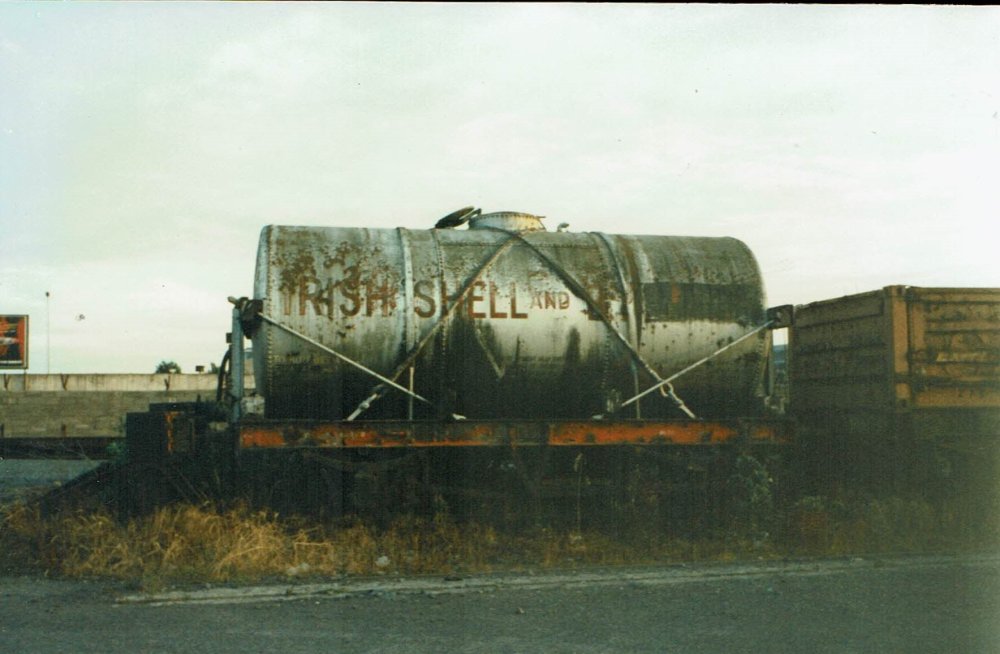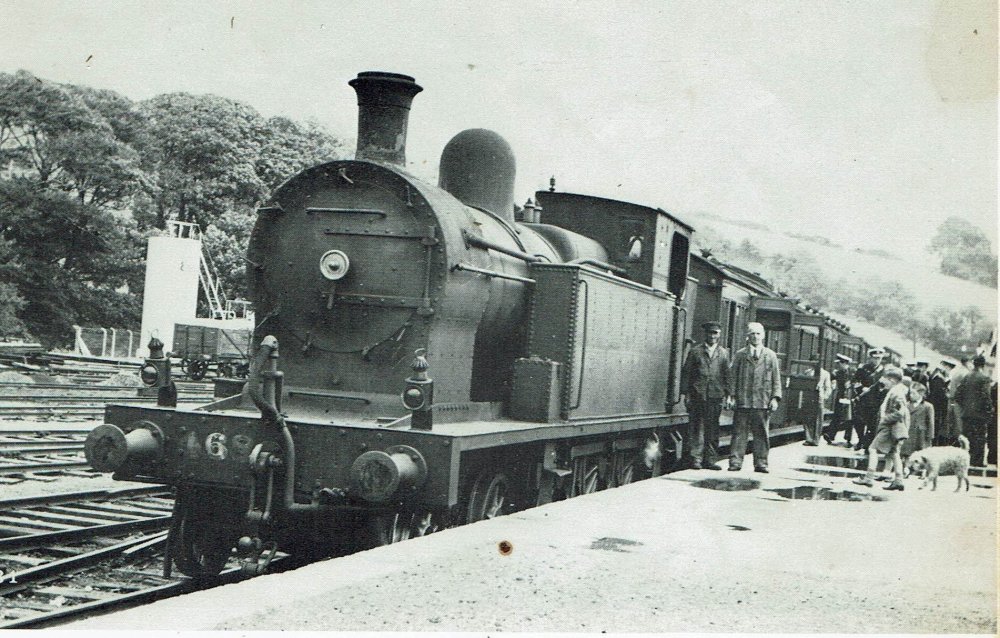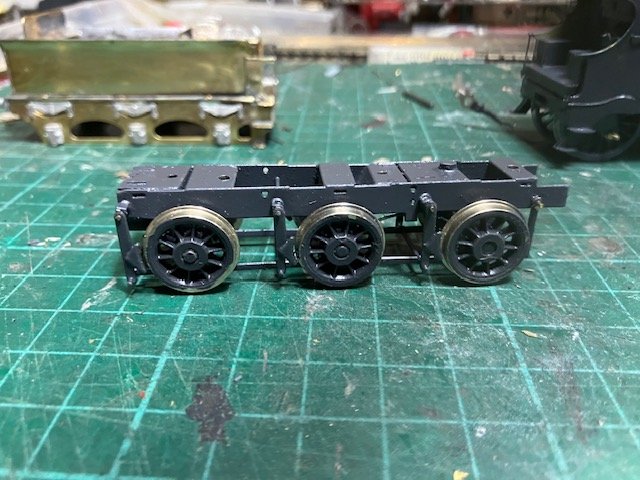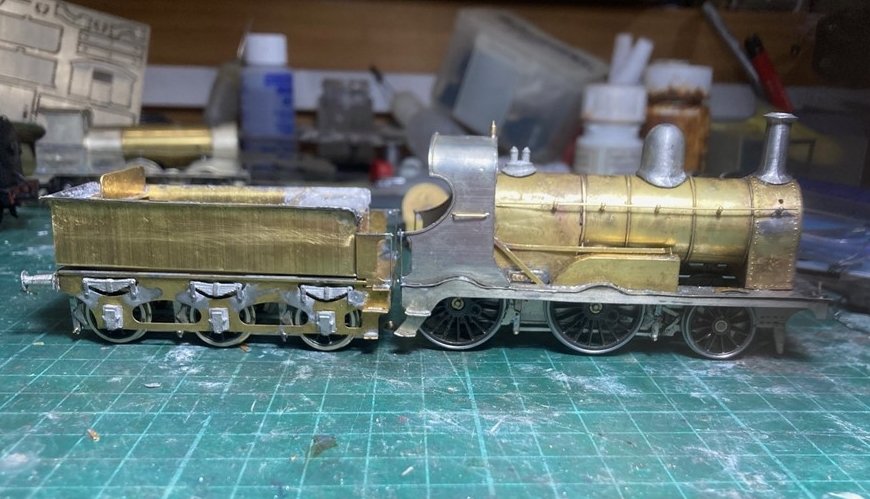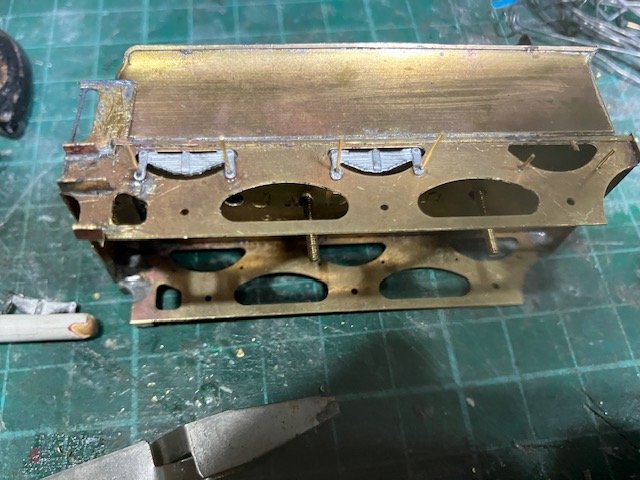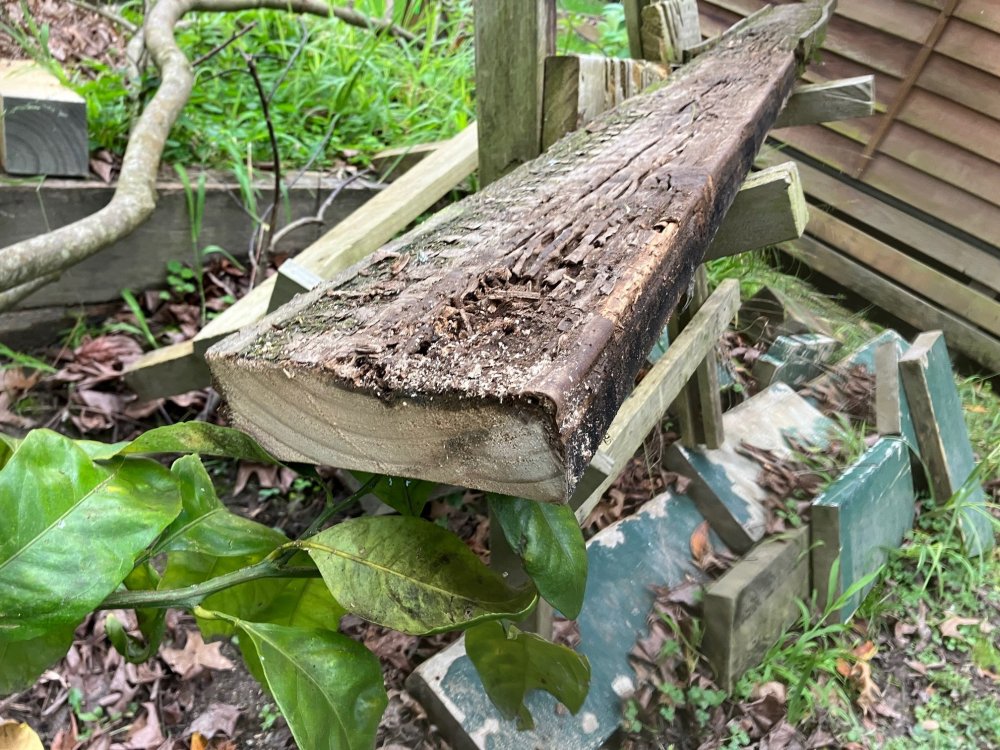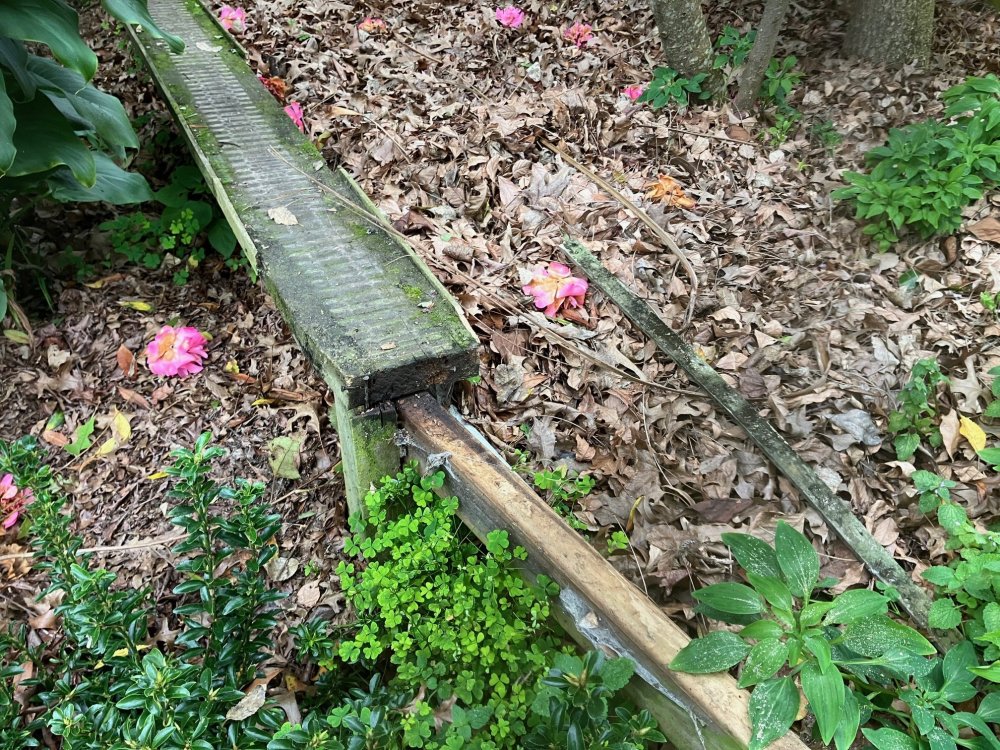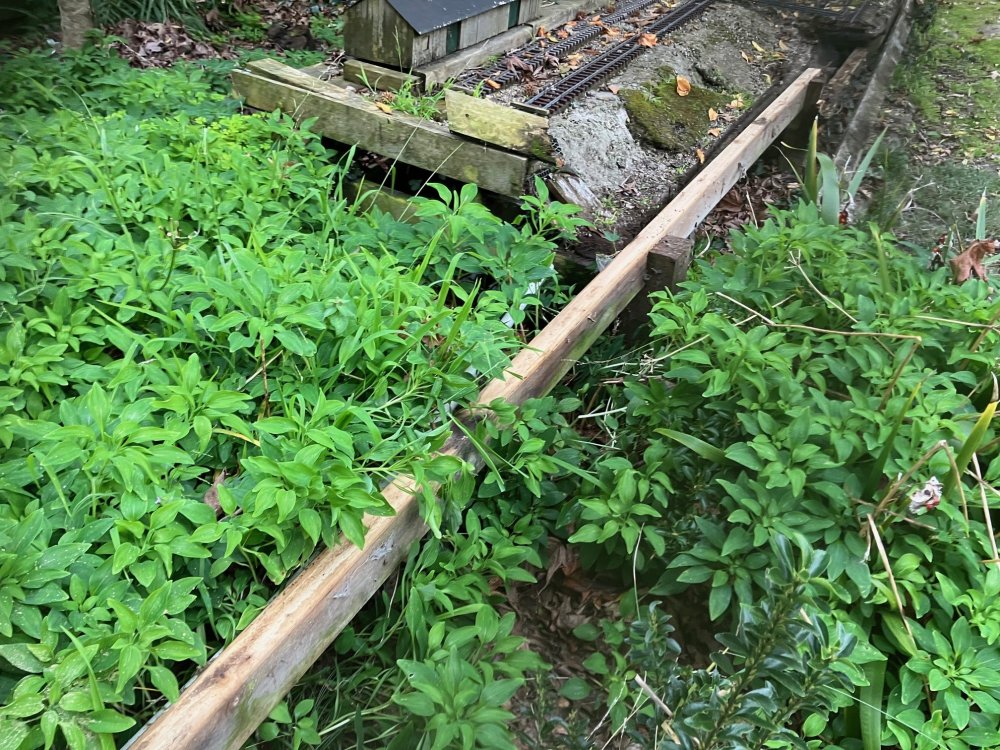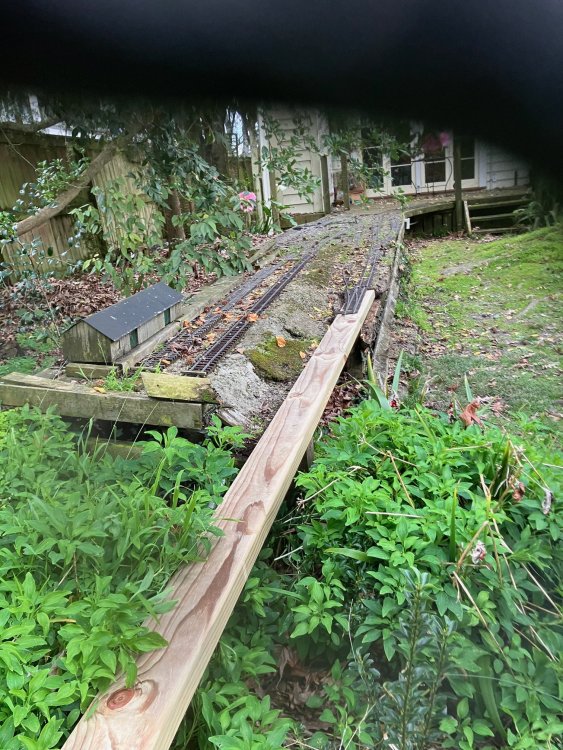-
Posts
4,875 -
Joined
-
Last visited
-
Days Won
119
Content Type
Profiles
Forums
Events
Gallery
Everything posted by Mayner
-
The 3D parts for our current RTR wagons orders are currently proceeding to production with our suppliers with an expected 4-5 week lead time for delivery to our workshop. I will provide and update and expected timeframe to order fulfillment when we receive the parts and have completed receiving inspection.
-

Ernies Massive Irish 1930's to 2005 Photo Archive
Mayner replied to Glenderg's topic in Photos & Videos of the Prototype
Apart from CIE not building Flat Wagons specifically for container traffic until the early 60s (25201-25435 12T-20'-11'wb) preventing pilfering may have been a factor, container would have to be lifted out of the wagon to open the doors. Strangely the GNR had purpose built wagons for General container traffic similar in general outline to the BR Conflat wagons of the same era. -
The question was prompted when I contacted Digitrax to check whether they would repair a DT402D Throttle that had died several vears ago and service a DB150 Command Station which I bought about 20 years ago, and advised that they no longer service or repair those products. I chose an Empire Builder intermediate level Digitrax starter set for an American N gauge layout I started around 25 years ago and gradually built up the system adding a second starter set, additional throttles and radio control. The system morphed from controlling American N Gauge layouts with around 30 DCC fitted locos to controlling a G Gauge garden railway before I abandoned track power changing to battery radio remote control. The DT402D was one of the final additions and probably the first to fail when I upgraded the garden railway to Digitrax "Duplex" radio system around 2010, but recently un-earthed the Digitrax system to control a small OO Gauge shunting layout. Given that my modelling/type of railway I operate has shifted from an American style 'walk around' layout capable of keeping several operators busy, to focusing mainly on building/assembling models and very occasionally running a train on the garden railway or one of my Irish 4mm efforts, I find it difficult to justify the cost of replacing a Command Station (£343 (Coastal DCC or Throttle (£250 Rails) with their equivalent when they fail £50 for a Gaugemaster DC hand held controller appears more affordable on a fixed income. Costings are based on replacing the existing Command Stations with the current/upgraded model. Fortunately the 2 DB150 command stations and other 3/4 throttes still work, but the command stations struggle with the programming function. I wonder whether it will be feasible physically or financially to replace the chips in the locos as they fail. Thankfully all my Irish steam outline Broad and Narrow gauge are DC only there is too much hassle wiring a kit or scratch built loco for DCC.
-
- 1
-

-

British locos and stock that can be disguised as Irish
Mayner replied to Westcorkrailway's topic in Irish Models
While Oil Company traffic was light and wagons scarce compared with other types, small depots at branchline terminals and large country times were common enough, the old style tank wagons produced by Bachmann and Oxford rail appear 'close enough" and used in conjunction with a small oil depot make an interesting scene and add to the operational interest of a layout. Sometimes visible in the background of photos the Oil Company depots at country stations were often small in scale one or two storage tanks inside a fenced compound. Oil depots were added at both Loughrea and Ballinrobe during the 1930s "Baronial Lines of the MGWR " P O'Cuimin The depot at Loughrea was sited near the buffers at the end of the cattle bank siding. Ballinrobe between the Station Building and Goods shed behind the platform. Its possible tank wagons were unloaded on the cattle bank road and piped (underground) to the Oil Depot, difficult to imaginge tank wagons with a highly flammable load being unloaded at the platform. 'A Decade of Steam "RPSI Excursion train at Bantry 1954 photographer uncredited Cahirciveen 2002? Irish Shell Depot appears to be on its original rail served site though the tanks may be modern replacements. There is a photo showing a tank wagon on the rail side of the depot in the Cahirciveen-Valencia railway book. The depot was site at the back of the cattle bank once located on the roadway on the right. The modern building in the background are government offices (Tax?) built in connection with the Governments de-centralisation programme of the eraly 2000s Another rail related building structure survived into the 21st Century at Cahirciveen, once possibly used as a Guinness store again served by the Cattle Bank siding. -

Marklin layout from the early 1980s
Mayner replied to Darius43's topic in Continental European Modelling
When I joined the Model Railway Society of Ireland in the early 70 there were basically two main groups of members, those that ran British proprietary rtr (Triang-Hornby, Wrenn/Hornby Dublo, British Trix) and Continental brands Fleischmann, Liliput and Märklin, there were a handful of members perhaps 3-4 scratch/kit builders who built their own models (mainly British outline O or OO gauge). The main attraction of the Continental brands appear to have being their build quality, robust construction and reliable construction compared with Triang-Hornby price was not an issue. The McGowan brothers did a nice business directly importing Continental brands and operated a 'savings scheme" where customers could place what we now describe as a Pre-Order and pay for a loco or stock on installments to be delivered 6-12 months later. In the United States O Gauge is still primarily 3 Rail Coarse Scale with some models sold at mouth watering prices https://www.trainworld.com/mth-20-3849-1-o-scale-premier-j-1-2-10-4-steam-engine-w-proto-sound-3-0-hi-rail-wheels-pennsylvania-cab-no-6474.html possibly aimed at a collectors market. The appeal of Märklin and American O appear to be tied up with high resale/investment value and an extremely robust 'toy train" as opposed to their appeal as a scale model. -

British locos and stock that can be disguised as Irish
Mayner replied to Westcorkrailway's topic in Irish Models
The Loughrea fueling tank appears to have used the tank once used on the West Clare mounted on a 'modified" Ballast Wagon. quite unlike the purpose built rectangular tank wagons used for tar traffic in Great Britain. There were rumours that the tank may have originally used for oil firing steam locos during the 1947 Fuel Crisis, the conversion does not appear the most professional with planks and timber packers apparrently supporting the tank brackets as opposed to a more engineered approach likely to be adapted by Inchacore or Limerick Not sure if JHB was thinking in terms of tank wagons in general that tank wagons were extremely rare in Ireland and almost all (with few exceptions) used for railway use. While generally true of the post 70s Block Train era where ESSO Claremorris, Irish Cement and Burmah were the main revenue commercial oil traffic sources, the Major Oil Companies and their Irish Distributors distributed their product by rail as wagons loads from the Ports in private owner tank cars until replaced with a road tanker fleet duirng the 60s-70s. Much of the traffic would have been single tank cars to oil depots at relatively small country stations in similar RCH pattern tank wagons to those used in the UK. Most companies had rail served terminals on Dublin's Alexandra Rd tramway, Irish Shell & BP its own Planet diesel loco. Many of the wagons appear to have been a 1927 (UK) RCH design, though Caltex invested in a fleet pf 'modern" anchor mounted but unfitted tank wagons in 1960 and ESSO imported vacuum fitted wagons from the UK in the late 60s for its Sligo, Claremorris and a short lived Oranmore traffic flows. While the companies invested heavily in new high capacity tank wagons for use in Great Britain during the early 1960s, the old wagons soldiered on in Ireland until late 60s/early 70s. Esso used modern but essentially obsolete wagons from the Britain for its traffic to the West. Its possible a re-liveried Oxford tank wagon may pass for a 'typical" Irish company wagon. Mex (Mc Mullen Bros?) Class A tank (two compartments different grades of petrol or petrol and TVO?) Another Class A (highly flammable) wagon dumped/stored at East Wall late 1990s ESSO logo just about visible Class B (Diesel, heavy fuel) Black Makers photo Shell-Mex Northern Ireland Many of the old private owner wagons in the South ended up stored/dumped near Sheriff St Signal box North Wall and may have been used for departmental use before scrapping. At one stage the Alexandra Road-Inchacore fuel train was made up of 1960 Clatex-Texaco tank wagons with Caltex 'grinning: through the Texaco marking. -

British locos and stock that can be disguised as Irish
Mayner replied to Westcorkrailway's topic in Irish Models
The Midland Great Western had a two rectaangular tank wagons 1108 & 1967 used for cresote traffic between the North Wall and Liffey Junctionsleeper depot and cresoting plant. The Midland bought a pair of RCH pattern tanks (5'8" diameter) for cresote traffic from Charles Roberts in 1915. Its possible both types may have lingered on in service into CIE days. (Notes MGWR Wagon Stock P O'Cuimin IRRS Journal 1969?) Haven't seen a photo of either type of wagon, its possible that the other large companies may have used similar wagons to transport cresote from the ports to their cresote plants. -

British locos and stock that can be disguised as Irish
Mayner replied to Westcorkrailway's topic in Irish Models
Built from GEM "Special Tank" kit unmotorised. Similar in general outline to the Greenore locos, but tank version of the LNWR 'Coal Engine" that had smaller (H Section) wheels and a straight running board, while the Greenore engines were conversions of the DX which had largerwheels and crankpin splashers. The H Section wheels had flat spokes used on some GSWR and LNWR classes. Following Andy Cundicks example of marrying a Brassmasters "Special Tank" with their DX underframe running board would be a better option for producing a Greenore engine especially in 21mm. Tried to convert a GEM Special Tank into a 21mm Greenore loco about 40 years ago but was not a success. -
The Sat Nav and Map could be set with different National/Regional accents. The wife (American/Ozzie) used to get a great kick out of a 'Australian Lass' giving us driving "directions" in the States and 'her" pronounciation of Kiwi place names. Not sure how AI would cope with Irelands numberous regional accents and dialects
-
Finally managed to complete the assembly of the replacement tender platework and fitting the detail castings. Pinning and gluing the springs seemed to have worked out neater than my previous attempts with low melt solder. The buffers and axleboxes are soldered from behind. The brass became quite tarnished after soldering compared to other of my models, possibly using the dreggs at the bottom of my flux bottle! I mix my own flux using distilled water and dilute phosphoric acid (available as Ranex Rust Buster in this part of the World.) I ended up removing the tarnsish and verdigris with tootpaste and an old tooth brush which seemed to do the trick. Tender chassis complete with brake gear from the original tender. Last major jobs on the loco to fit vacuum ejector pipe, vacuum pipes, number plates, transfers& screw couplings front buffer beam and tension lock couplers to tender. Daytime temperatures are a bit cold for spray painting as we are currently getting a blast of winter weather as we flip flop in this part of the World between warm wet-humid and cold dry weather conditions on an almost weekly basis.
- 392 replies
-
- 10
-

-
I had a similar experience to your Braclay with an EM saddle tank about 15 years ago and ended up having to replace both the driving wheels and coupling rods to salvage the loco. I 'overfettled' the rods and made them unusable in attempting to ease a 'tight spot' in the quartering and later realise that I could not achieve sufficient clearance between the coupling rods and slidebars/crosshead with the existing wheels & cranpins. The loco is a non-runner on 'static display' on its original wheels these days, while it waits its turn in the Workshop. My EM stuff is failry low priority in comparision with my Irish and American stock, the loco has been a 'slow burner" bought over 20 years ago before we migrated to New Zealand, a lot of the assembly carried out in Motel rooms during the American phase of our journey, I have had the replacement wheels and complete with a set of recessed crankpins in stock for about 5-6 years but haven't gotten around to completing the loco. Hopefully I'll will be able to find the parts when I eventually get round to completing the assembly of the loco!
-
Sure looks like the Prairie! The Bachmann Big Haulier cars are great value and look the part. Looks like you managed to find yourself an Aristocraft Delton C16 2-8-0 pretty rare these days I suspect! I bought a circle of LGB track a loco and a caboose to get something running quickly in the garden as a distraction from my Irish modelling about 17 years ago, and ended up with a large 'collection' of American Large Scale locos and stock and still haven't gotten around to starting the Irish layout, mighty addictive stuff!
-

A 3d printed 800 class for 00 (and a WLWR goods loco)
Mayner replied to Killian Keane's topic in Irish Models
"A Decade of Steam" on CIE in the Fifties" Donaldson,O'Neill,Mc Donnell published RPSI early 70s William McDonnell operating manager Cork notes "The cab was big and roomy but even so rather warm,-one wonders that, in such a well finished engine, the faceplate was not lagged" . I don't recall seeing a lagged faceplate on a preserved steam loco (at least narrow gauge) in the UK -

British locos and stock that can be disguised as Irish
Mayner replied to Westcorkrailway's topic in Irish Models
I like the 201 Class 0-6-0T (converted from a Hornby J83?) basically tank engine version of the J15 appear to have been mainly used for shunting in Dublin and Cork and passenger and goods trains on the West Cork. A 201 apparently converted from a Tri-ang Jinty appeared in series of articles on building corrugated iron buildings from card in the Railway Modeller in the early 1970s. The shape of the cab roof was the give away! -
Presumably before anything happens the Northern Ireland Assembly would first have to approve the reports recommendation to re-build Portadown-Derry and both the British and Irish Government's approve (provide funding) for the rebuild. The cost benefit of 1:1 for the project bascially means for every £1 spent on the project results in a return of £1 to the economy not that the project breaking even. While Irish Governments tend to take a pragmatic approach to their economic and social policy, British Governments tend to flip-flop between centre left and centre right positions on economic and social policy. Would an incomming Conservative Government or Conservative-Liberal Coalition potentially cancel the funding for a rebuild of the Derry Road on idealogical grounds in a similar manner to the current centre-risht New Zealand Governments cancellation of rail and infrastructure projects approved by the previous centre-left Government?
-

Ernies Massive Irish 1930's to 2005 Photo Archive
Mayner replied to Glenderg's topic in Photos & Videos of the Prototype
I think its more to do with Bachmann BR containers not fitting in Leslies Corrugated Opens rather than containers being carried in CIE open wagons. There are several photos of BR Containers in CIE/GSR 'Standard' wooden bodies opens, but hadm't seen any in corrugated apart from the Heuston Goods photo. The strapping/hinge detail of the Bachmann containers is a bit heavy and I had to carve the raised detail off the containers to fit in both my and SSMs models of the "Standard Irish' Open Wagon. -
Back to 664 again although the loco appeared complete and ready for the paint shop at the last posting, I could not achieve a satisfactory finish to the tender despite stripping the paint and further particularly around the tender springs. So in the end I took the drastic step of replacing the tender body and outside framing. Main problems were a minor dent in one side of the tender tank and excess solder around the tender springs which was particularly noticeable when painted. The tender used with the K Class and other Atock designs introduced in the 1890s had a springing/suspension arrangement similar to the LNWR 'Bloomers" introduced in the 1850s rather than contemporary late 19th Century practice where the springs were placed outside the frames. https://preservedbritishsteamlocomotives.com/2-2-2-lnwr-bloomer/ I was surprised when saw a fuel tank on what appeared to be a tender chassis with similar springing arrangement when I visited Machynlleth MPD in Wales during the 1980s. Its possible Atock used this springing arrangement as he did not wish to have the tender footplate/tank projecting outside the loco frames. The masters for the springs were originally designed with locating pins intended to fit into holes in the sideframes, but were not practicable to cast in whitemetal due to the small size of the pin. My usual practice was to solder the spring hanger to the frame with low melt solder which formed a thin film over the frame not really noticeable when painted except for 664! Applying a little lateral thinking I decided to try drilling, pinning and supergluing the springs to the frames! I picked up a pack of miniature drills at the local hobby shop which appear to be of excellent quality though of no info on the supplier or sizes on the pack! So far I have successfully drilled springs for one side with a 0.5mm drill in a small hand drill. Pins are .45mm brass bent to an L shape and soldered into the etched holes in the outside frames. Springs for one side superglued to the pins. I will probably reinforce with a dot of epoxy behind the hangers
- 392 replies
-
- 10
-

-

Ernies Massive Irish 1930's to 2005 Photo Archive
Mayner replied to Glenderg's topic in Photos & Videos of the Prototype
"Centre cess" drainage with the drain in the centre of the 5' appears to have been commonly used in Ireland up to the 80s. The same arrangement was used in the cuttings on the Islandbridge Junction-North Wall line and on the Cork Line at Stacumny Bridge between Lucan Nth and Hazlehatch. (Cyril Fry H Stacpoole collection) 1961 photo of green B110 on an Up Waterford passenger Irish Railways in Colour a Second Glance" (Midland Publishing 1995 Practice probabably ceased with the introduction of mechanised track maintenance from the 1970s onwards, would be challenging to model! -
The CIE and GNR AEC railcars were virtually identical visually. The main difference was operational the GNR railcars could only run in multiple with 2 power cars generally running 2 or 3 coach trains while the CIE cars could run in multiple with 4 power cars with a maximum train length of 8 coaches. The GNR and CIE versions used different types of train heating boiler.
-
Not the typical DRS clean loco image. Possibly the Rail Head Treatment Train (RHTT) used in UK leaf fall season uses high pressure spray to clean railhead covers locos and stock with muck?
-
The two UTA AEC Raicars 6&7 which entered service in 1951 were built in Belfast and different in design and outline from the GNR & CIE AEC railcars. The bodies were converted from ex-NCC 1920s built coaches and the mechanical design anticipated British Rail DMU practice with the engine mounted horizontally. While 6&7 had 'open' plan seating layout and end gangways, they usually ran as a 3 cars set with an non-gangwayed compartment coach. The bodywork of 6&7 appeared dated compared with the AEC built railcars being similar to 1920s built coaches with raised panneling. Worsley-Works produce a set of parts for 6&7, Kirley who posts these days on RM web may have produced a model of 6&7. Colm Flannigan "Diesel Dawn" unreavels the UTA railcar story The terms of the GNR break up required the locos and stock to be devided evenly between CIE and UTA with each getting 10 ex-GN AEC cars and 12 BUT cars, one theory was that it would have been more efficient for UTA to acquire the entire fleet of 24 BUT cars and CIE to add the 20 AEC cars to its fleet. Main difference operationally was that the control system of the GN AEC cars could only control two power cars, while the control system of the CIE cars could control 4 power cars. Allowing the GNR to run 3-4 coach trains, CIE up to 8 coaches.
-
There were some signs of rot (after 16 years) to the trackbase of the recently lifted section of track, so I decided to replace an entire 4.8 meter section on the basis that the trackbase should be good for another 10-15 years, by which time we may have moved home or I may no longer be capable of playing trains or have keeled over. Turned out rot was mainly superficial on a section of board where I made the mistake of leaving the grain facing upwards. A real consolation was there was no sign of decay to vertical section of the T or L girder and the supporting piles. Replacement section with cut ends treated and ready for installation. Timber is wet pressure treated and stress graded for external use in decks, pergolas and car ports and needed to people to lift it on to the roofrack of the van at the builders merchant. Replacement section installed ready for track-laying. I will dress up the edges with some old trellis rail I have in stock, which I may eventually use to retain ballast. This section of the layout was originally loose ballasted with 6-8mm washed pebble which was washed away after several years exposure to the weather. On other sections ballast is bonded with PVA (sold in 5Ltr containers as concrete bonding agent) which has held up well in certain areas and less well in others.
-
It might be worth while contacting the relevant Irish Rail "Infrastructure Managers' Office https://www.irishrail.ie/en-ie/about-us/iarnrod-eireann-infrastructure/infrastructure-contact-details CIE used to be helpful to enthusiasts/modellers requests for drawings of locos, stock, buildings and structures. As far as I recall (1970s-80s) drawings for buildings and structures were held at the regional Civil Engineers (Infrastructure managers) offices and enthusiasts were allowed to view drawings by appointment, though digital copies may be available these days.
-
I remember reading in one of the IRRS Journals (1970-80s!) that a pair of Class were allocated to Ballina as Pilot (shunter) and Branch Passenger loco during the late 50s-early 60s, but likely to have gone by 63 when Limerick-Sligo passenger trains were diverted to Ballina and the Branch Passenger service abolished and Manulla Junction closed as a station. C Class were also used for Pilot Duty at Sligo and Galway, there is a nice 1960 photo of a (very clean) light green C229 shunting a Horse Box & 4w Post Office van at Sligo in Barry Carse Colourpoint Irish Metrovick book. Padraig O'Cuimin wrote about C Class presumably Galway or Athlone pilot loco deputising for G611 Class on Loughrea Branch Mixed Train in his book on the Loughrea and Ballinrobe Branch lines. As JHB said CIE locos were centrally rostered and with the possible exception of the B101 Class (Waterford and Southern Section main-line locos could appear almost anywhere on the system.
-
One of the planning conditions of the Harlequin (now Atria) Centre development in Watford during the late 80s was the restoration of a number of 'Listed Buildings" some of which dated from the 15th Century. One of the options offered by our restoration specialist was to remove and restore some of the 'Tudor era" timber framed buildings in their 'as-built' stage with the framing members plumb and level or in their 20th Century 'Listed ' state with barely a plumb or level line. English Heritage opted for the latter! Interestingly some of the historians got very excited when they found evidence of wattle and daub construction dating back to the 15th Century or possibly earlier in one of the building.
.png.c363cdf5c3fb7955cd92a55eb6dbbae0.png)




